Some sharks are nightmares in disguise.
They don’t just lurk—they hunt, with teeth built for chaos and jaws that crush anything unlucky enough to cross their path.
These 12 sharks aren’t your friendly beach buddies. They’re the ocean’s heavy hitters, the silent stalkers, and the ones you definitely don’t want to bump into while swimming.
From freaky appearances to lightning-fast attacks, they bring the kind of danger that makes you rethink your next dip in the sea. Ready to meet the ocean’s ultimate predators?
Great White Shark

The Great White Shark is the quintessential apex predator of the ocean. Known for its immense size and power, it can grow up to 20 feet in length. This shark is notorious for its role in countless horror films, and its real-life presence is just as intimidating. With powerful jaws and an acute sense of smell, it can detect blood from miles away. It often preys on seals, sea lions, and even small whales. Despite its fearsome reputation, the Great White is a crucial part of the marine ecosystem.
Tiger Shark
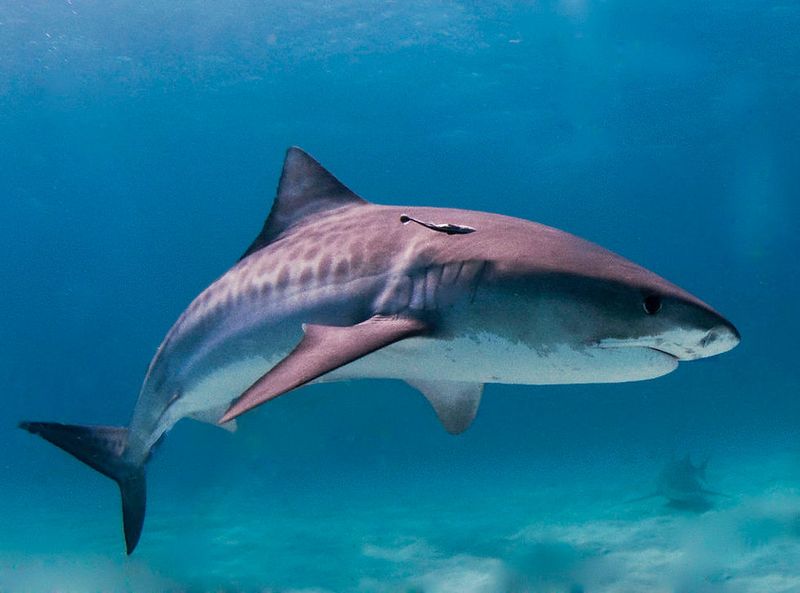
Renowned for its curious nature, the Tiger Shark is a formidable predator. This shark is easily recognizable by the dark, vertical stripes on its body, resembling a tiger’s pattern. It can grow up to 16 feet long and is known to inhabit warm, tropical waters. Tiger Sharks are often referred to as the “garbage cans of the sea” because they eat just about anything. Their diet ranges from fish, seals, birds, and even license plates! This opportunistic feeding behavior makes them highly adaptable and one of the ocean’s top predators.
Hammerhead Shark
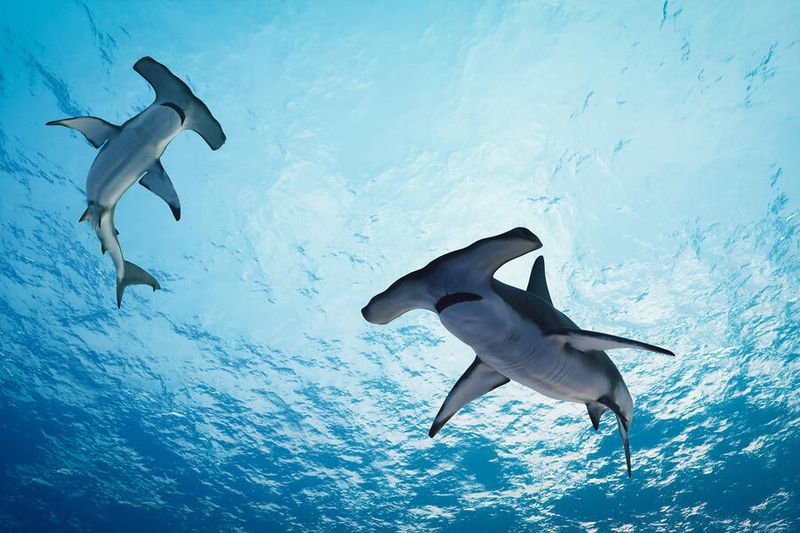
The Hammerhead Shark is easily identifiable by its distinctive head shape, which provides enhanced vision and sensory perception. These sharks can be found in warm waters, often swimming in schools during the day. Hammerheads have a unique way of hunting; they use their head to pin down stingrays, one of their favorite prey. Despite their menacing look, they are generally harmless to humans. However, their size and strength make them formidable in the wild. The hammer-shaped head is not just for show; it’s a highly evolved hunting mechanism.
Bull Shark

Bull Sharks are known for their aggression and ability to thrive in both salt and freshwater. These sharks can be found in rivers and lakes, as well as the ocean, thanks to their unique ability to regulate salt levels. Bull Sharks are responsible for most near-shore shark attacks, due to their preference for shallow waters. They have a robust, stocky build, which adds to their powerful presence. Their aggressive nature and adaptability make them one of the most dangerous sharks to encounter in the water.
Oceanic Whitetip Shark

The Oceanic Whitetip Shark is a powerful predator that roams the open ocean. Recognizable by its long, white-tipped fins, it is often seen near the surface, far from shore. This shark is notorious for being one of the first to arrive at shipwreck sites, attracted by the promise of an easy meal. Oceanic Whitetips are opportunistic feeders, preying on fish, squid, and even seabirds. Their boldness and curiosity make them formidable in the wild ocean. Despite their slow-moving appearance, they are highly efficient hunters.
Mako Shark

The Mako Shark is renowned for its speed and agility, often considered the fastest shark in the ocean. With a torpedo-shaped body, Makos can reach speeds of up to 45 miles per hour. This incredible speed makes them skilled hunters, often leaping out of the water to catch their prey. Their diet mainly consists of fish and cephalopods. Although not typically a threat to humans, their speed and power make them a formidable presence in the ocean. Mako Sharks are also prized targets for sport fishing, due to their fighting spirit.
Goblin Shark

The Goblin Shark is a rare deep-sea creature known for its bizarre appearance. With a long, flattened snout and protruding jaws, it looks like something out of a horror movie. These sharks inhabit depths of over 100 meters, making them elusive and mysterious. Their jaws can extend dramatically to capture prey, showcasing a unique feeding mechanism. Goblin Sharks primarily feed on fish, squid, and crustaceans. Despite their terrifying appearance, they pose little threat to humans due to their deep-sea habitat.
Sand Tiger Shark
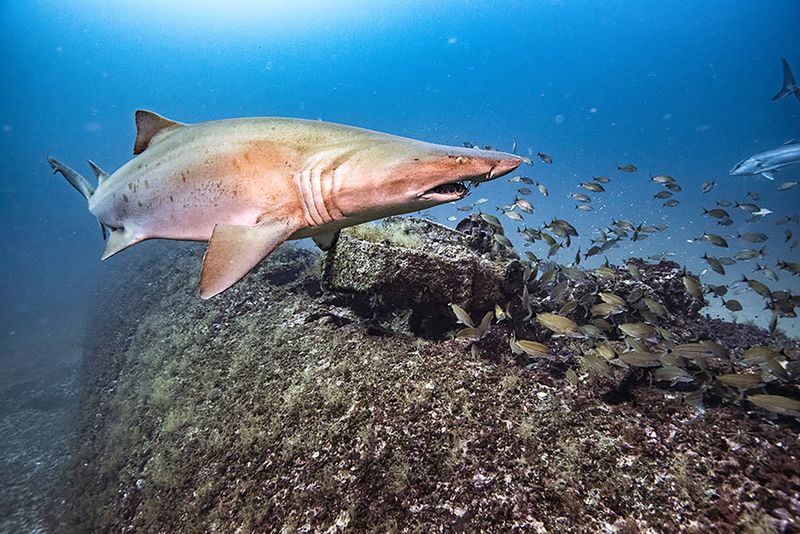
The Sand Tiger Shark, with its menacing appearance and rows of sharp teeth, is a common sight around shipwrecks. Despite their fearsome look, they are generally docile and pose little threat to humans. These sharks often inhabit shallow waters and are known for their unique method of gulping air to maintain buoyancy. Sand Tigers primarily feed on smaller fish and are often found in aquariums. Their slow-moving nature hides a fierce predatory instinct, making them fascinating creatures of the sea.
Nurse Shark

Nurse Sharks are generally considered to be one of the more docile shark species. They are often found resting on the ocean floor, enjoying the warmer shallows. With their distinctive barbels, used for detecting prey, they have a unique way of hunting. Nurse Sharks feed on small fish and invertebrates, using suction to capture their meals. While they are not aggressive, provocation can lead to defensive bites. Their peaceful demeanor makes them popular in aquariums and snorkeling sites, offering a gentler glimpse into the world of sharks.
Thresher Shark
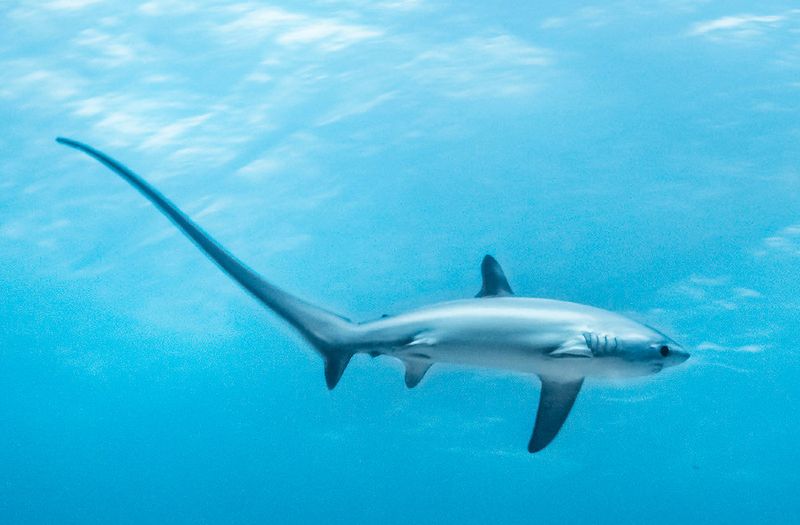
Thresher Sharks are known for their remarkable tail, which can be as long as the shark’s body. This tail is used as a powerful weapon, stunning prey with swift strikes. Threshers inhabit both open ocean and coastal waters, hunting fish with precision. Their large eyes provide excellent vision for spotting prey in deep waters. Despite their size and power, Thresher Sharks are generally not a threat to humans. Their unique hunting technique and distinctive appearance make them a captivating sight in the marine world.
Basking Shark
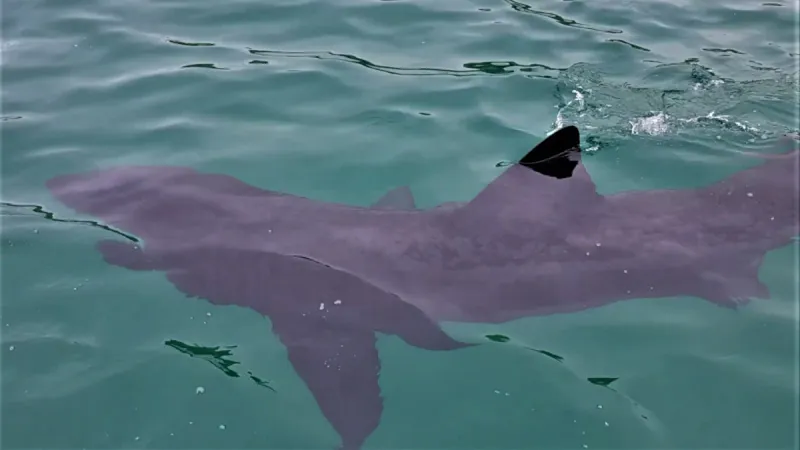
The Basking Shark holds the title of the second-largest fish in the sea. Despite its massive size, it poses no threat to humans, as it feeds solely on plankton. Basking Sharks are often seen swimming slowly near the surface, with their mouths wide open, filtering water for food. They can grow up to 40 feet in length, making them an awe-inspiring sight. Often found in temperate waters, they migrate seasonally, following plankton blooms. Their gentle nature and size create a magnificent spectacle in the ocean.
Whale Shark
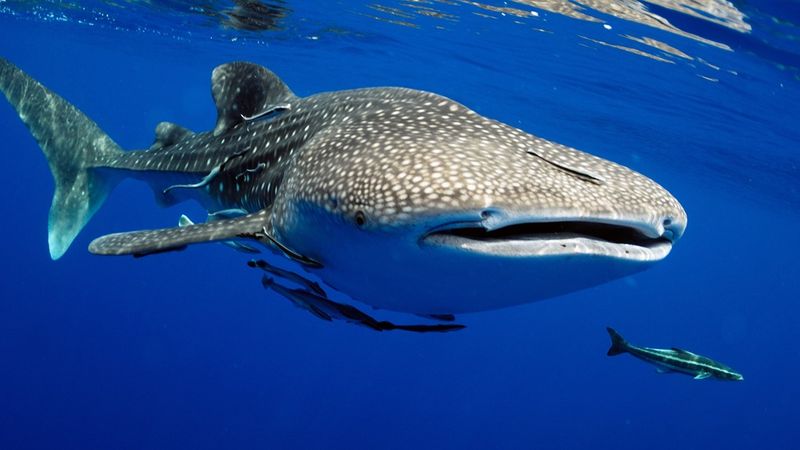
The Whale Shark is the largest shark and indeed the largest fish in the ocean. Known for their gentle giants, they can grow up to 60 feet long. Whale Sharks roam tropical oceans and are filter feeders, consuming plankton and small fish. Despite their size, they are harmless to humans and often swim close to divers, offering an unforgettable experience. Their distinctive spotted pattern makes them easily recognizable. These majestic creatures are a testament to the ocean’s wonders, embodying the beauty and mystery of marine life.

